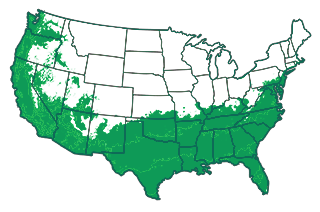About
Black Mission Fig trees are renowned for their adaptability and delicious fruit production.How tall does a Black Mission Fig tree grow?
Under ideal conditions, a Black Mission Fig tree can reach heights of 10 to 30 feet, making it suitable for various garden sizes. Regular pruning can help manage the tree's height to fit specific space constraints and facilitate easier harvesting of its fruits. Despite its potential size, the tree's manageable height makes it a favorite for home gardeners.How long does a Black Mission Fig tree live?
With proper care and favorable growing conditions, Black Mission Fig trees can thrive for several decades, with lifespans of up to 50 years or more. Their longevity makes them an enduring addition to home gardens, continuously providing bountiful harvests. Routine maintenance and care can enhance their lifespan and productivity, ensuring they remain a fruitful centerpiece for years.How fast do Black Mission Fig trees grow?
Black Mission Fig trees are known for their moderate growth rate, typically adding one to two feet of height per year. In their early years, they focus on expanding their root system and establishing their trunk before accelerating their vertical growth. With proper care, including suitable sunlight, soil conditions, and watering, they will quickly become robust and flourishing trees.How to care for Black Mission Fig trees?
Ensuring the health and productivity of Black Mission Fig trees requires attention to watering, soil health, and pest control. Water evenly and deeply during dry spells, taking care not to over-water, as figs prefer slight dry spells between watering. They thrive in well-draining, loamy soil with occasional fertilization to boost growth. Be vigilant for any signs of pests or disease, and employ organic methods where possible to maintain tree health.When to prune Black Mission Fig trees?
Prune Black Mission Fig trees during their dormant season, typically in late winter, before new growth begins. This timing helps minimize stress on the tree and allows for the corrective shaping of its branches. Pruning in the dormant season helps manage the tree’s size and removes any dead or crossing branches.How to prune Black Mission Fig trees?
Start by removing any dead, diseased, or damaged wood to maintain the tree's health. Aim to create an open, vase-like shape to improve air circulation and sun penetration throughout the canopy. Consistently prune to remove excessive branches and encourage the growth of larger, more productive fruit-bearing limbs.Why do we like Black Mission Fig?
Black Mission Figs are a culinary delight, valued for their rich flavor, versatility in cooking, and numerous health benefits. Their adaptability to different growing conditions makes them an ideal fruit-bearing tree for both experienced and novice gardeners alike.| Mature Size | 10–30 ft tall × 15–20 ft wide |
| Sunlight | Full (6-8 hours) |
| Spacing | 15–20 ft |
| Harvest Season | June to September |
| Pollination | Self-pollinating |
| Uses | Fresh eating, drying, preserves, baking |
| Water Requirements | Moderate; moist, well-drained soil |

Growing Zone: 7-10
Begin by choosing a sunny location with well-draining soil to ensure optimal growth. Dig a hole that is twice as wide and equally as deep as the tree's root ball, and place the tree in the hole, filling it back with soil while ensuring that the top of the root ball is level with the ground. Water thoroughly to remove air pockets and help the soil settle, supporting the tree’s establishment.
The best time to plant Black Mission Fig trees is in the early spring when the threat of frost has passed and the soil begins to warm. This timing ensures that the trees have a full growing season to establish strong roots and adjust to their environmental conditions. Alternatively, in mild climates, planting can also occur in the fall, allowing roots to develop during the cooler months.
For optimal growth and fruit production, Black Mission Fig trees should be spaced at least 15 to 20 feet apart. This spacing allows adequate air circulation, reducing the risk of disease and pests. It also provides each tree with sufficient room to expand its canopy without competing for sunlight and nutrients, promoting healthier growth.














